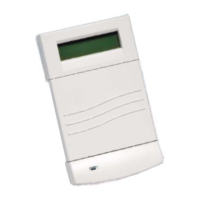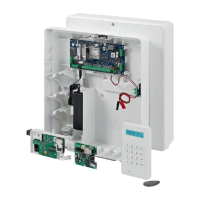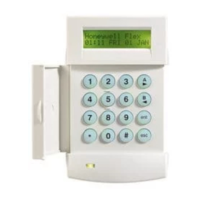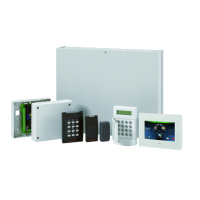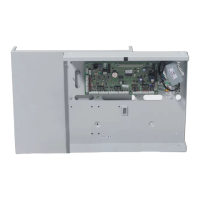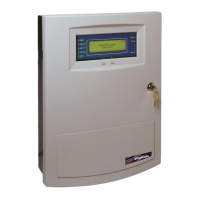68 GWF-7075 Addressable Fire Alarm Control Panel Manual — P/N LS10147-002GF-E:E 06/11/2019
System Operation Releasing Operations
8.7 Releasing Operations
This control panel supports two types of releasing, Double Interlock Zone, and Single Interlock Zone. The Double Interlock Zone oper-
ation requires an interlock switch input in the system, and the Single Interlock does not. An interlock switch is typically a dry-contact
pressure switch.
When you select a Single or Double Interlock Zone releasing, the system will automatically default the GFPS-6S Intelligent Power Mod-
ule in the following system parameters:
• Output Group 2 is created. Output Group 2 will be defaulted as an “Alarm” output group for all releasing zones. NAC [01:001] is
assigned to Output Group 2.
• Output Group 3 is created. Output Group 3 will be defaulted as an “Pre-Alert” output group for all releasing zones. NAC [01:002]
is assigned to Output Group 3.
• Output Group 4 is created. Output Group 4 will be defaulted as a “Release” output group for all releasing zones. NAC circuit
[01:003] is assigned to Output Group 4.
Trouble
A system trouble condition
occurs.
A trouble condition with a CO
detector
The communicator seizes control of the phone
line and calls the central station.
The on-board annunciator sounds a loud,
pulsing beep in the sequence one second on,
nine seconds off.
SYSTEM TROUBLE LED flashes.
The LCD displays a screen similar to this one.
Press down arrow to view the trouble. A screen
similar to this one displays.
Press SILENCE and enter an access code (or
activate the key) to silence the annunciator.
Once the trouble condition has been fixed, the
system will restore itself automatically.
Pre-alarm
A single detector trips in a 2-
Count zone. (2-Count means two
detectors must trip before an
alarm is reported.)
Touchpad PZT beeps.
The LCD displays a screen similar to this one.
Press down arrow to view the prealarm. A
screen similar to this one displays.
All system operations are available in this mode.
Reset
The RESET button is pressed
followed by a valid code or
rotation of the key.
All LEDs are on briefly then the LCD displays
“ALARM RESET IN PROGRESS”. If the reset
process completes normally, the date and time
normal mode screen displays.
Menus are not available during the reset
process.
Silenced
An alarm or trouble condition
has been silenced, but still
exists. To silence alarms and
troubles, press SILENCE
followed by the Installer or User
Code or rotate the key.
SYSTEM SILENCE LED is on. SYSTEM
TROUBLE, SUPERVISORY or GENERAL ALARM
LED (depending on condition) is on. The
annunciator (and any notification devices
attached to the system) will be silenced.
Press down arrow to view the location of the
alarm or trouble. When the condition no longer
exists, the SYSTEM SILENCED and SYSTEM
TROUBLE LED, SUPERVISORY or GENERAL
ALARM LEDs turn off.
Operation
Mode
Operation Mode
Condition
System Behavior
Operation Mode Troubleshooting
Options
Table 8.4 : Operation Mode Behavior (Continued)
NOTE 1: These releasing functions can only be done if the system has a GFPS-6S intelligent power module included.
NOTE 2: To modify the defaults, you can program the defaults.
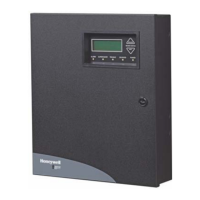
